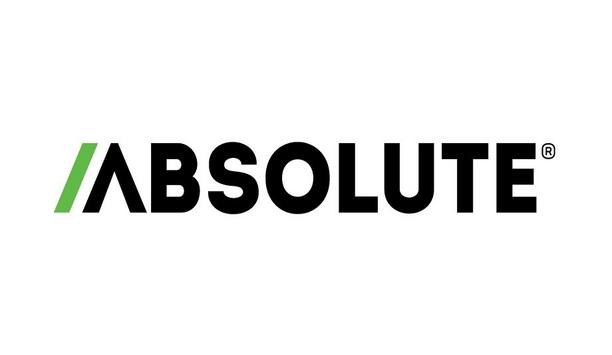Selling security technology to upper management: Here’s how
Editor Introduction
Obtaining needed funding for security technology improvements often requires going to senior management with a hat in hand. But requests for more security funding from the C-suite may fall on deaf ears unless a security professional can make a compelling case for the needed expenditures. It starts with learning to speak in terms that resonate with upper management and also involves carefully analysing the benefits of security investments to the broader enterprise. We asked this week’s Expert Panel Roundtable: How can the security department effectively “sell” the need for technology to upper management?
Security now reaches well beyond mitigating risk. Video systems produce data and actionable intelligence beyond specific security measures. Security departments should focus on operational efficiency and business insights gained through new technological developments that integrate with traditional security systems. In virtually all markets, analytics can be captured to improve the functionality and safety of the premises, resulting in major cost savings and increased efficiency for the end user.
The most important thing is: Know your business and your audience. What do they care about? What is the business, and what are you protecting? What are their KPIs? Security easily rolls up into any upper management’s goals and initiatives, you just need to put yourself in their shoes first. Sell to the company/corporate goals and not to fear or security “best practices.” The challenge so many security leaders have is that they don’t build business cases and value how their executive buyers/budget owners get them from other departments. Security isn’t always a tangible thing so understanding your audience and their objectives becomes key. Employees want to feel cared for and protected as they do their work. Legal will want to hear about how the technology can better manage risk and compliance. Finance of course will be interested in improving ROI (and there is ROI in security technology!). Security leaders would be well served to position their departments as thought leaders and industry trailblazers versus “keeping up” or “because it’s best practice.”
Corporate security has never been more critical than it is now. Identifying and managing threats can be overwhelming especially when you don't have the right technology or collaboration to help manage the wide range of threats proactively. Executives recognise security as a necessary investment but typically don't expect any return. Security teams must shift leadership's mindset, highlighting the tangential benefits (i.e., financial or business continuity) alongside the traditional guns, gates, and guards (3G) discussion. Documenting the security program's effectiveness is a starting point, but showing a return on risk investment can be troubling typically, success means nothing happens. But connecting the investment to the security strategy highlights the ancillary effects on a company experiencing limited (or no) increased levels of profound security events, and that's a measurement of an effective program. Teams can earn executive confidence and support by communicating this with the correct narrative and corresponding data.
It’s all about being able to communicate ROI in tangibles and intangibles effectively. The C-suite often operates in hard numbers, and that can be challenging when one of the best ways to “sell” security is to quantify losses that have not occurred. Instead, look at all functions and benefits of technology and try to obtain quantifiable benefits beyond prevented losses. For example, does this technology automate many tasks currently being performed by an employee? If so, the ROI can be calculated regarding the employee’s salary, hours, and where this resource can be redistributed. If technology helps an organisation comply with specific laws or regulations, the ROI can be calculated in terms of the cost of non-compliance. In this way, upper management understands quantifiable returns alongside the often-intangible benefits of risk reduction.
Security systems have long been considered a sunk cost of doing business. However, the continued evolution of video cameras as smart IoT sensors, capable of capturing myriad data about operations, compliance, and customer behaviours represents a new frontier for the industry. The C-suite always wants more data — data to validate its strategies, verify a marketing campaign, or data that proves a new store layout is working as designed. Security cameras with sophisticated AI-powered analytics can now provide this kind of anonymous data in addition to state-of-the-art security. It’s also important to remind upper management that video surveillance not only protects people and assets, but it also protects the company from frivolous lawsuits. Having a clear image of what really happened in a contested event can pay for a system many times over. In this way, modern video security technology can provide business and operational intelligence that positively impacts revenue.
Despite what senior management may think, new security technology can be seamlessly integrated into existing systems, which mitigates the need to “rip and replace” previously purchased cameras. This simple cost-benefit analysis is useful for the security department to sell the need for technology to upper management. Technology such as a cloud-based video security system means that existing cameras, access control systems, sensors, and APIs can all be viewed and managed from a single interface. Additionally, due to the open nature of a cloud-based video security system, upper management does not need to continuously approve the costs of new cameras, as the existing infrastructure can be integrated to leverage the same smart analytics with high velocity. Most importantly, upper management should be reminded that a proactive approach is critical as market technology is already using software such as AI audio and video analytics to keep businesses safe with proactive alerts.
For years, security technology was regarded as an operational necessity mostly focused on protecting people and assets. As the value of the data-driven insights provided by unified physical security systems is realised, security departments are moving away from being seen as a cost center to becoming active and central players in their organisation’s digital transformation of operations and strategic planning. Today’s physical security infrastructure involves a massive network of connected sensors that requires highly sophisticated technology, and a robust IT and cybersecurity strategy. It demands thoughtful cooperation across every function of an organisation. With a unified security system, businesses can use security data to gain actionable insights and improve operational efficiency. This offers the potential for higher returns on investment and can also help C-suite executives understand that a unified physical security system is much more than a risk-mitigating tool. The right security system can enable new ways of working that go beyond security.
Upper management tends to rely on metrics and performance indicators to guide strategies and decision-making. As such, security departments can now sell that video security systems have evolved to become comprehensive data-harvesting machines capable of providing the company with much more than just the protection of people and property. With AI-based object detection, today’s cameras have become sophisticated smart sensors that can accurately count people, vehicles, and map behaviors. There is numerous analytics, both built-in and from third parties, that can help companies customise exactly the kind of data that is most valuable to their organisation. Heat maps, dwell times, and even the approximate age and gender of people can be anonymously collected to validate assumptions from marketing departments. Conversion rates can be calculated based on how many people entered a store and how many sales were made. The latest AI-based cameras can directly benefit the company’s bottom line.
The first step for a K12 School Security Department is to complete a qualitative district-wide Risk Assessment for the Board of Directors. A free assessment tool endorsed by the U.S. Department of Education is available from the Readiness and Emergency Management for Schools (REMS) technical assistance center. Repeated every two to three years to address changes in the “threat-scape,” this assessment process is critical for designing risk mitigation and management plan that gives the Board a detailed, campus-by-campus vulnerability snapshot. This plan should support phased implementations or funding initiatives if budgets dictate. It should include both risks and projected outcomes as the foundation for a comprehensive yet flexible multi-year blueprint spanning the people, processes, and technology that will deliver these outcomes. The technology portion should specify flexible, scalable, and easily upgraded solutions so ongoing improvements can be made incrementally and don’t require hardware changes to stay ahead of threats.
Security continues to remain a cost center versus a margin generator. We are making strides in the right direction, but we are not there yet. The functionality of modern security technology is also increasing the likelihood that the security system can be a multi-purpose asset, used to find inefficiencies and generate improvements throughout the enterprise. Ultimately, upper management is likely not interested in the technical details of how it works but more in the end result and its impact on cash flow, revenue, and operating margin.
The key to “selling” the idea of security solutions to the management and other departments is to show the value-add of data collected by a well-integrated system. By integrating these systems with the central database, and combining it with previously distinct silos, any organisation can benefit from a better understanding of personnel interactions with the built environment. These insights enable cost savings in the form of energy usage (which is particularly relevant at the moment) and facilitate the ability to assess the utilisation of space at any monitored premises accurately. With the large-scale move towards hybrid working, it is immensely valuable for an organisation to be able to gain accurate data to look at this properly and to have evidence as to whether scaling facilities up or down is required. It is important to offset the investment in security systems against these valuable additions as well as the core safety/security provision.
Editor Summary
One way to get the attention of the C-suite is to focus on the benefits of security systems beyond the security department. Another strategy is to document the effectiveness of security investments. It helps to communicate tangible as well as intangible benefits. Enterprise leaders are starving for data, so it is important to document how security systems can provide more metrics and data to help them manage the business. Finally, proposing new systems that integrate easily with existing technologies can help keep the price tag manageable. When speaking to senior management, above all, one should know their audience.
- Related links
- Ava CCTV software
- Genetec Access control software
- Genetec CCTV software
- HID Access control software
- Morse Watchmans Access control software
- TDSi CCTV software
- TDSi Access control software
- HID Access control readers
- Morse Watchmans Access control readers
- TDSi Access control readers
- Genetec Network video recorders (NVRs)
- HID Access control cards/ tags/ fobs
- TDSi Access control cards/ tags/ fobs
- TDSi Network video recorders (NVRs)



















